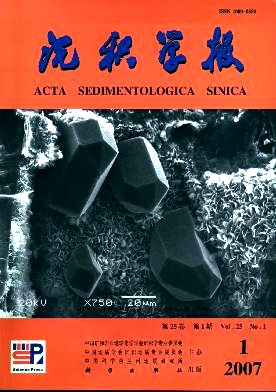Genetic Type and Intrafomational Heterogeneity Pattern of Lowporosity and Lowpermeability Sandbodies in Fuxian Exploration Area
- Received Date: 1900-01-01
- Rev Recd Date: 1900-01-01
- Publish Date: 2007-02-10
-
Key words:
- intrafomational heterogeneity
Abstract: On the basis of a careful analysis of sedimentary facies from outcrop sections, cores, test data, drilling and well loggings, delta, lake, and sublacustrine fan facies are mainly developed in the Chang 6 Member, Yangchang Formation, Upper Triassic in Fuxian Exploration Area of Ordos Basin. Ten microfacies types of sandbody have been distinguished in these sedimentary facies, for example distributary channel, rivermouth bar, distal bar, gravityflow channel, and distal turbidite sandbodies. Their reservoirs range from 2.20% to 14.90% in the porosity and vary from 0.01×10-3μm2 to 6.50×10-3μm2 in the permeability. These sandbodies are mostly the reservoir type of low porosity and permeability. They are resulted from postdepositional compaction, cementation and filling. The loss ratio of porosity from the compaction is 18%~19%, and those from cementation and filling is equally about 9%. An average of ultimate porosity is equally about 10% today. Four basic types of intraformational heterogeneity are recognized by the vertical pattern of grain size, porosity, permeability and other reservoir parameters and logging response. These types of intraformational heterogeneity are porosity and permeability pooring upward, porosity and permeability improving upward, compound, and complex types. The former three types of intraformational heterogeneity are determined by sandbody microfacies, depositional hydrodynamics, sediment grainsize, depositional sequence. The complex type of intrafomational heterogeneity is largely related to the diagenetic reworking, including differential cementation and differential buried dissolution.
| Citation: | CHEN Jingshan. Genetic Type and Intrafomational Heterogeneity Pattern of Lowporosity and Lowpermeability Sandbodies in Fuxian Exploration Area[J]. Acta Sedimentologica Sinica, 2007, 25(1): 53-58. |






 DownLoad:
DownLoad: